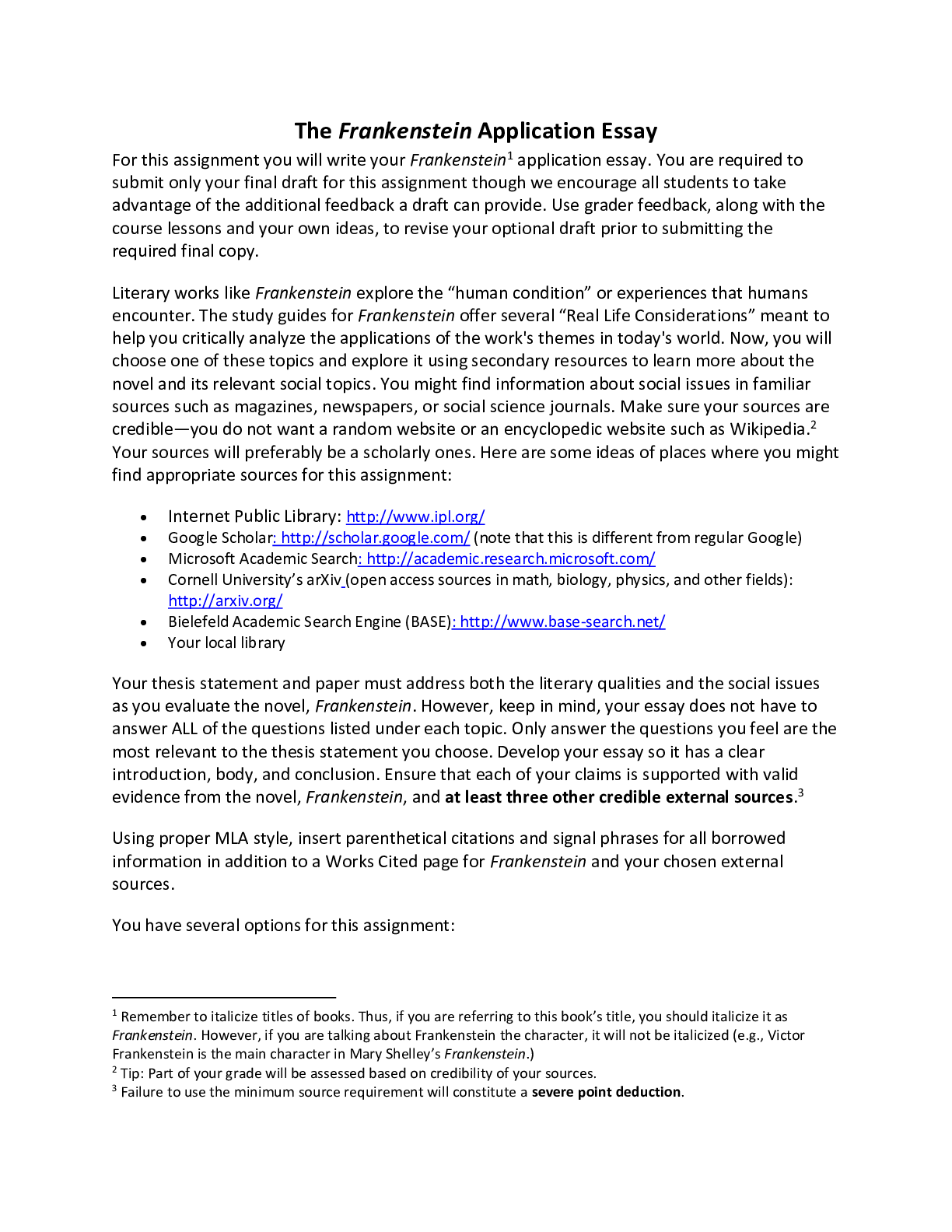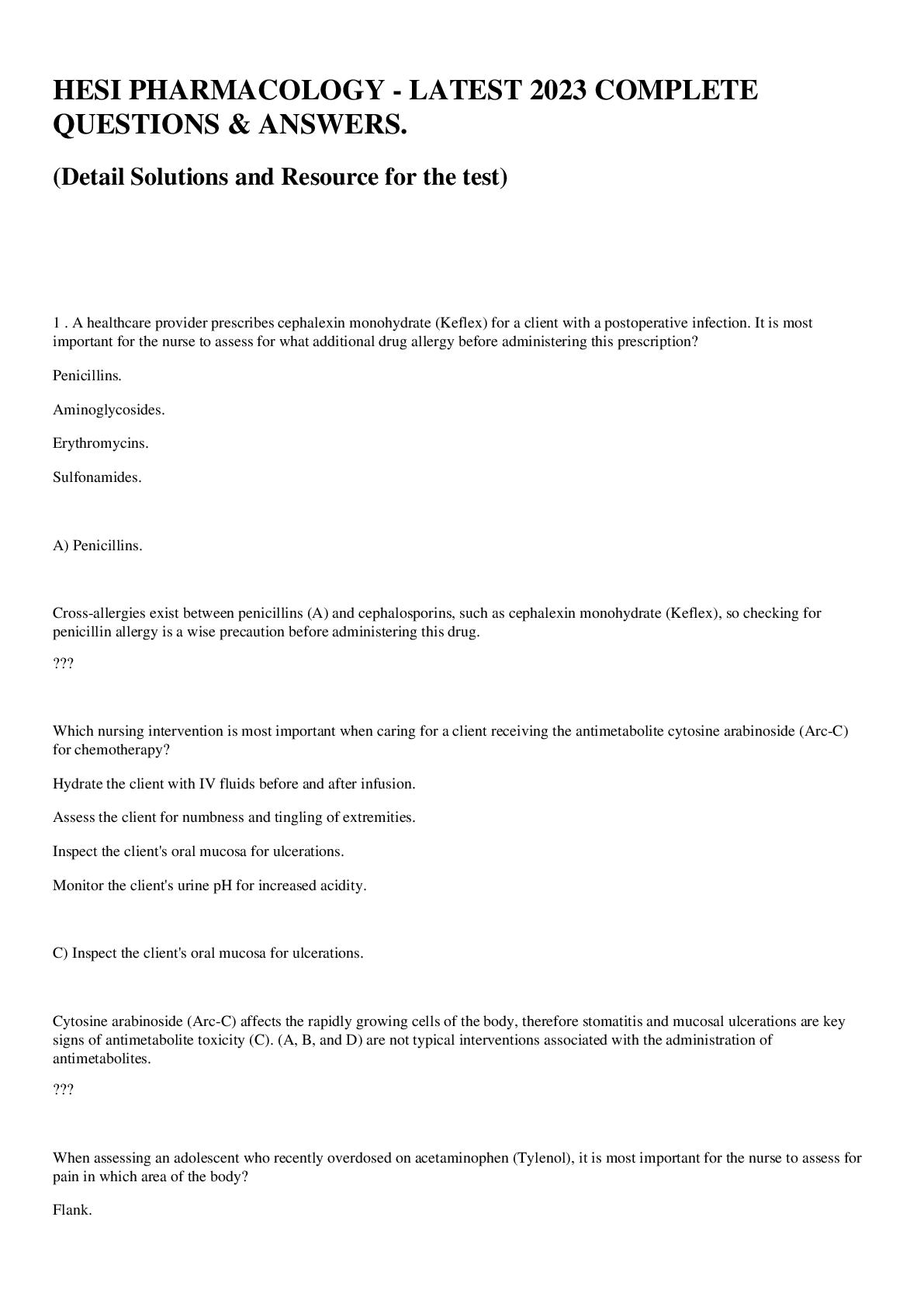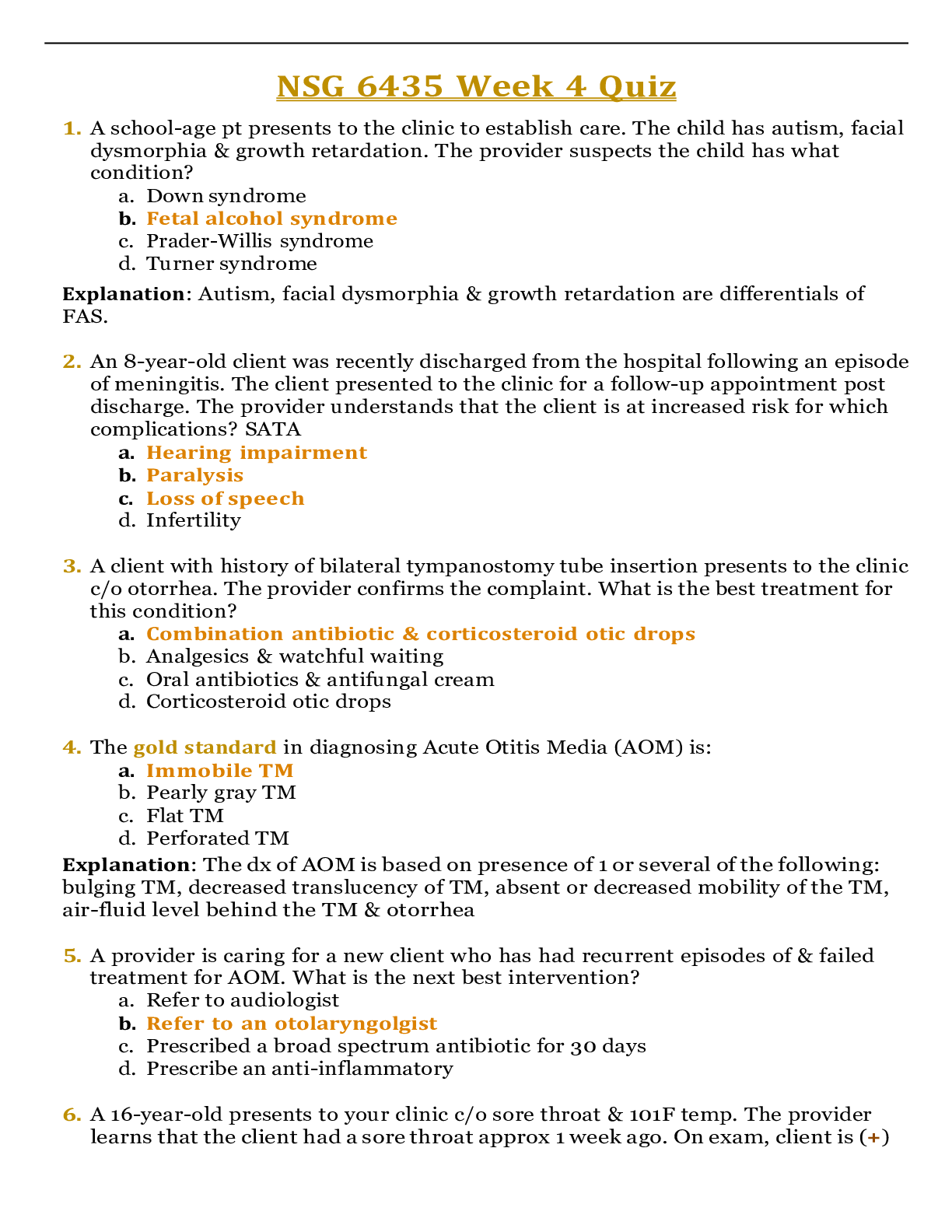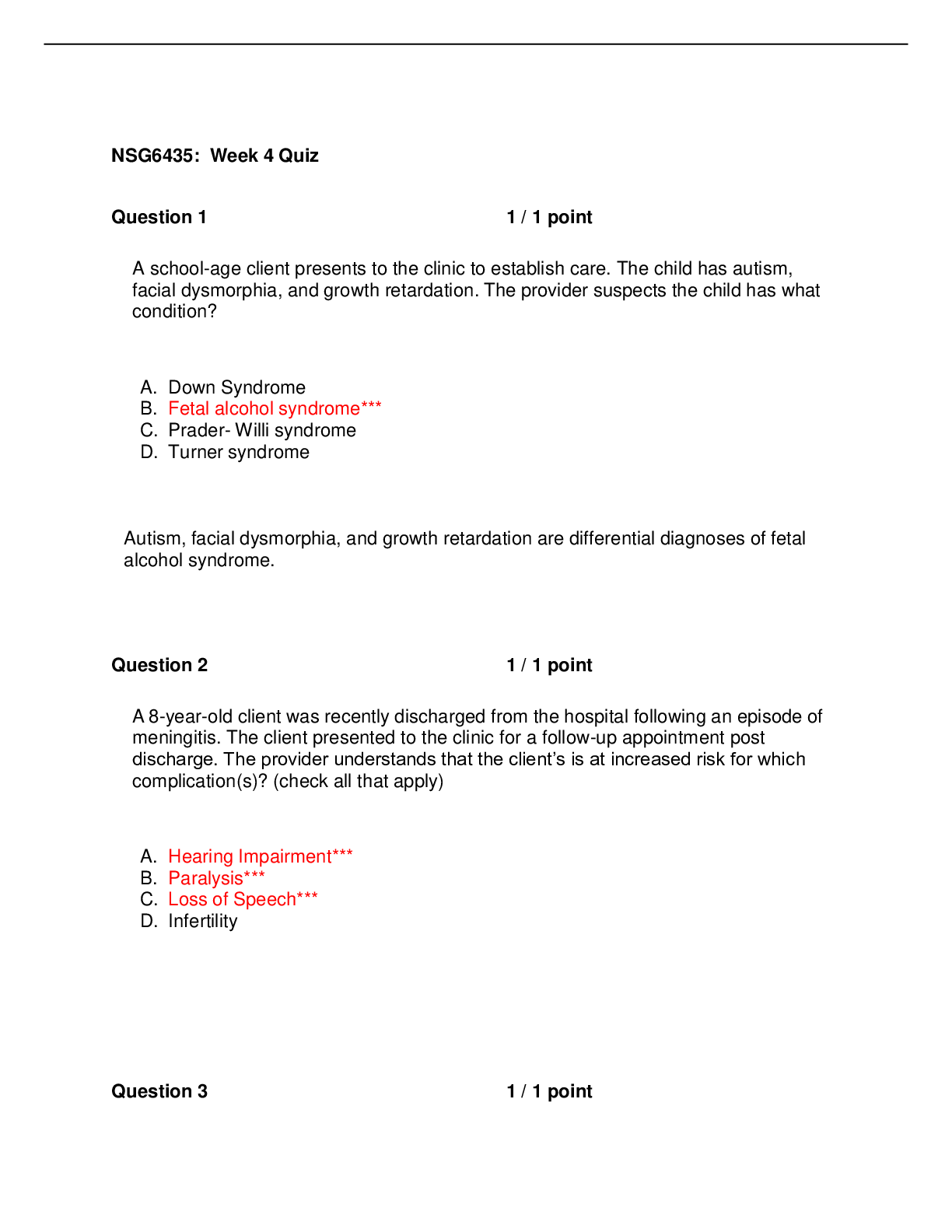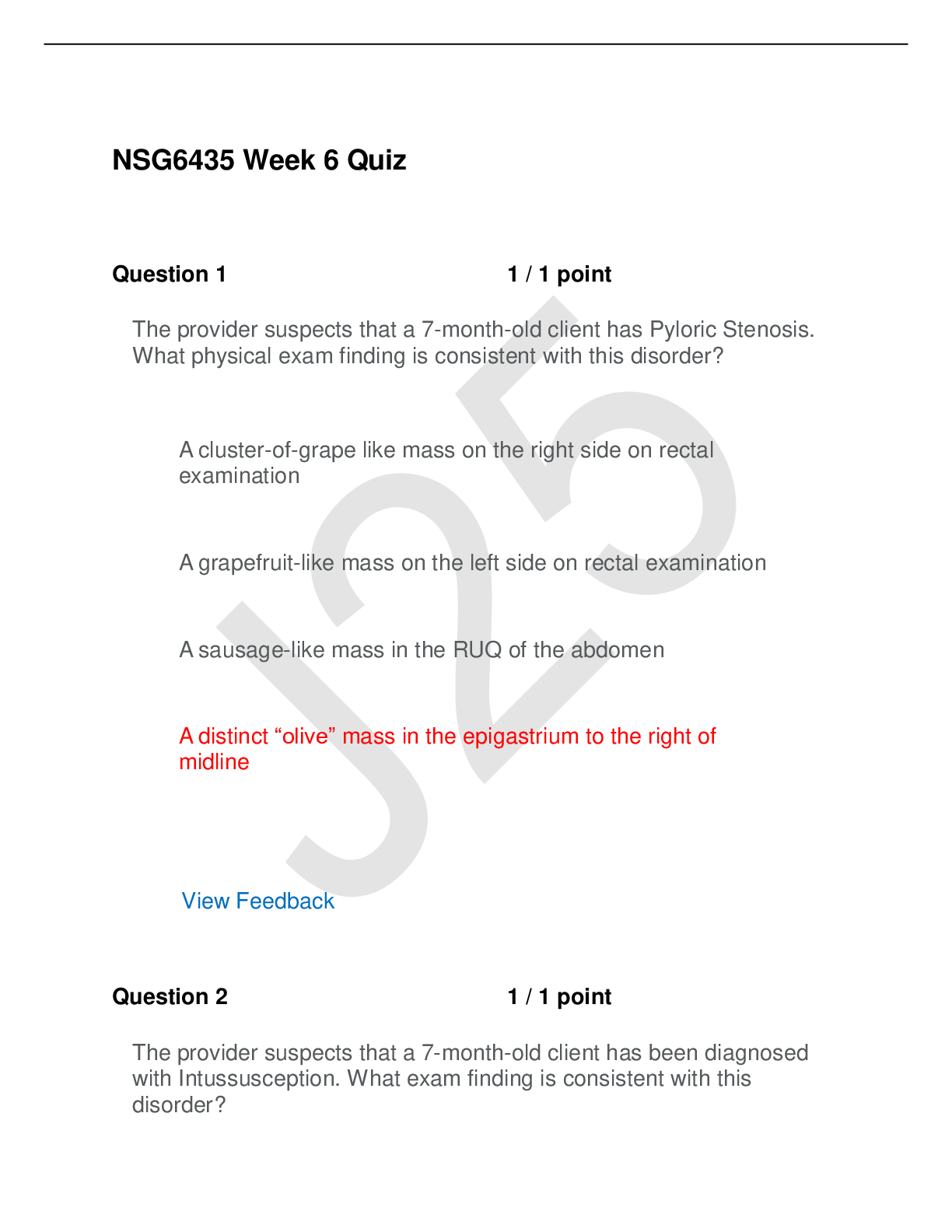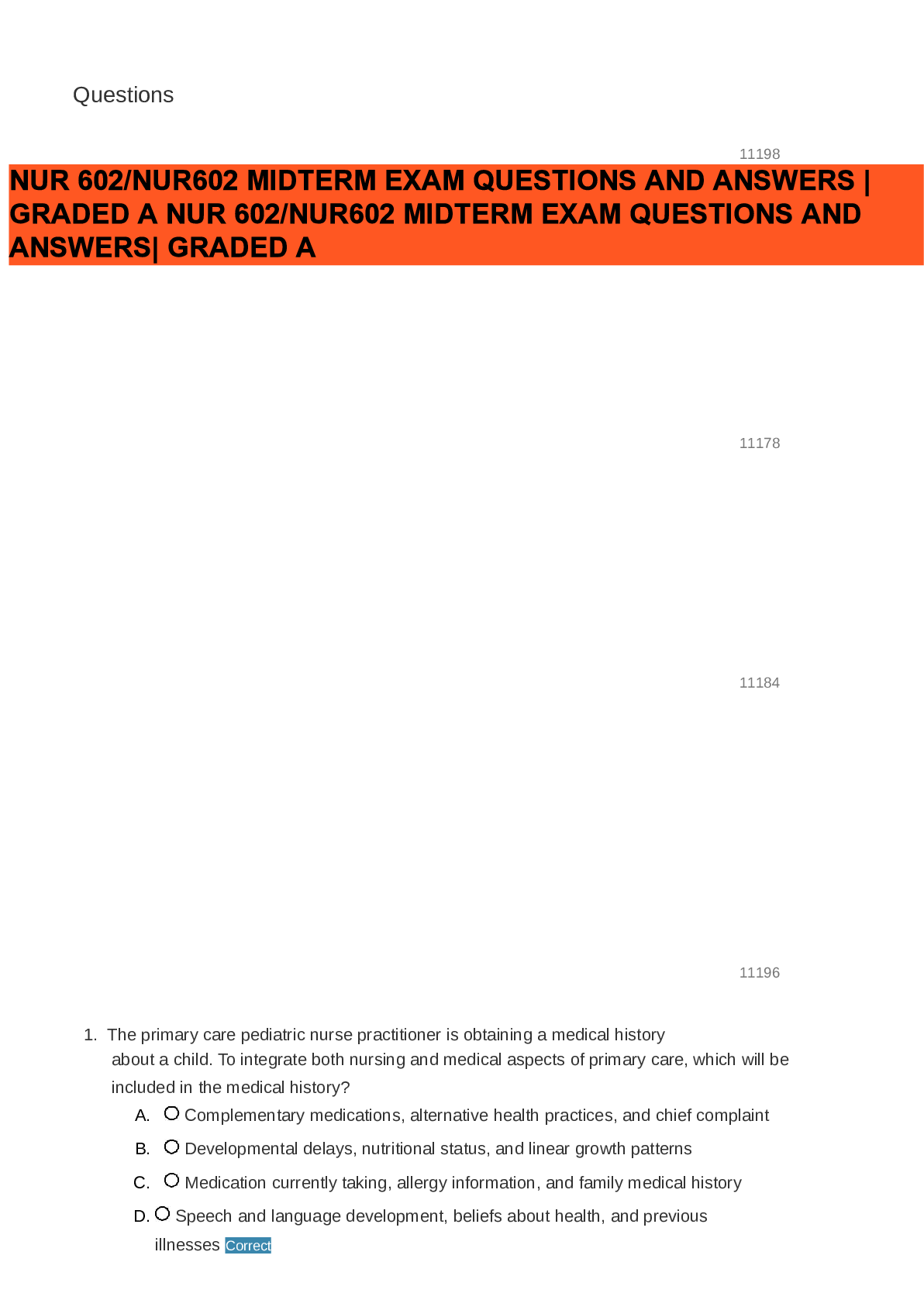Law > QUESTIONS & ANSWERS > Tutorial letter 501/3/2021 Introducing Theories of Religion RST1502 Semesters 1 & 2 (All)
Tutorial letter 501/3/2021 Introducing Theories of Religion RST1502 Semesters 1 & 2
Document Content and Description Below
Self-assessment activity 1.1 Write down your initial answers to the following questions: What do you understand by ‘theories’, ‘religion’ and ‘theories of religion’? Which quest... ions or issues do you expect to study in this module? Please write down the answers that you would give to the questions above. At the end of this module, you will be in a position to return to your initial answers and think about ways in which you would like to adapt your initial formulations. In this module, as its title Introducing Theories of Religion indicates, you will be introduced to major theories of religion. Note, therefore, the three key terms in the title, which may be given the following content at the beginning of this module and that you may revisit and give further content as you work through the module: (1) By an introduction to theories of religion we intend at first year level an orientation on the most important theories of studying religion in the past 150 years (ie since about 1870). (2) By theories we mean ways in which religion has been seen (the technical term ‘theory’ is derived from the Greek verb theorein ‘to see’), understood and Downloaded by Jayden Mbugguz (jaymbugguz91@gmail.com) lOMoARcPSD|8637614RST1502/102 6 explained. As indicated under the previous point, our focus will be on theories of religion since the second half of the 19th century. (3) For religion we may take as working definition the sociological definition of Durkheim according to which all religions consist of beliefs and practices that are sacred (‘set apart’) in such a way that they unite adherents into a group, and adapt it by foregrounding asymmetrical power relations of class, gender and race that are legitimated or challenged by religions and religious movements. In the course of this module you will encounter many definitions of religion as you study different theories of and approaches to religion. By using this proposed working definition as point of reference, however, you will be able to debate and assess the diverse theories. You might, of course, as you work through this module, wish to adapt the working definition suggested here by offering your own that could be employed for analytical purposes. Note the term analytical, derived from Greek analysis ‘breaking up’, which means here the breaking up of religion into its smaller, constituent parts. This is what Durkheim did by identifying beliefs (including dogmas and myths or sacred narratives), practices (including rituals and festivals as collective rituals) and unified communities as elements of religion, just as we may break down a sentence into smaller units of verbs, nouns, adjectives, adverbs etc, when we analyse a sentence. Understanding a religion or sentence, of course, requires that one put these pieces together again by relating them to each other (or synthesising them, from Greek synthesis ‘put together’). Which questions will we foreground in this module? We may, on the basis of the definitions above, formulate and further elaborate a few related questions that we will think about in this module. Our main question will be the following: How have scholars of religion seen, understood and explained religion in the past 150 years? This question will be discussed in Tutorial Letter 501 and its sequel Tutorial Letter 102: - How have white scholars in imperial European metropoles around the 1870s and at the turn and beginning of the 20th century constructed their theories of religion? We intend to show you how these theories have been constructed by means of a threefold process of mediation: indigenous knowledge about African indigenous religion was reported by colonial middlemen (case studies will be taken from southern Africa), which was then abstracted from its colonial context and appropriated by scholars in Europe to construct mostly evolutionary theories Downloaded by Jayden Mbugguz (jaymbugguz91@gmail.com) lOMoARcPSD|8637614RST1502/102 7 of religion that served to justify a civilising mission to subjugated, colonised peoples. This is the thread running through Tutorial Letter 501. - How have 20th century phenomenological and critical scholars seen, understood and explained religion? While phenomenologists claimed to describe religious phenomena objectively as they appear (phenomenology is derived from Greek phainomai ‘appear’), and to identify recurrent patterns across religions, critical scholars of religion have argued that such claims to objective description were never neutral but masked unequal relations of gender, class and race. The critical theorists focus, therefore, precisely on the latter problematic functions of religion. This will be the focus of Tutorial Letter 102 that you will receive as a follow-up to Tutorial Letter 501. 1.2. Syllabus Self-assessment activity 1.2 Consider the following statement on the purpose of this module, which simultaneously gives an indication of the syllabus of the module: The purpose of this module is to provide insight into major theories of religion including the role of Africa in theory formation. Students who successfully complete this module will be able to demonstrate knowledge of the nature of religion as defined by leading theorists of religion; can demonstrate knowledge of and assess linguistic, anthropological, sociological, psychological, phenomenological and critical approaches toward religion. Which major theories and theorists of religion do you hope to encounter in this module? Take a look at the Table of Contents of Tutorial Letter 501. Which theories and theorists of religion are listed here? Can you think of major phenomenological and critical theorists of religion that you might encounter in Tutorial Letter 102 (the sequel to Tutorial Letter 501)? You will notice that we begin in the next study unit (study unit 2) with different definitions of religion, and then distinguish between three different types of comparative religion, namely interfaith, theosophical and critical. The purpose of the latter distinctions is to distinguish the comparative study of religion within the academy on the one hand, from comparisons of religions by proponents for interreligious dialogues and by theosophists on the other hand. These distinctions are crucially made by David Chidester in his groundbreaking Empire of Religion: Imperialism and comparative religion (2014), which is the primary source for the study units in Tutorial Letter 501. Downloaded by Jayden Mbugguz (jaymbugguz91@ [Show More]
Last updated: 2 years ago
Preview 1 out of 87 pages

Buy this document to get the full access instantly
Instant Download Access after purchase
Buy NowInstant download
We Accept:

Reviews( 0 )
$13.50
Can't find what you want? Try our AI powered Search
Document information
Connected school, study & course
About the document
Uploaded On
Jun 08, 2021
Number of pages
87
Written in
Additional information
This document has been written for:
Uploaded
Jun 08, 2021
Downloads
0
Views
107




